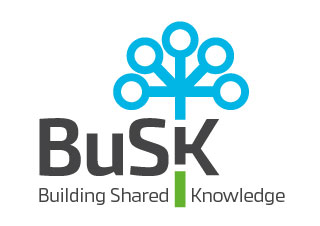Funded Projects 2014-2020
Project BusK
| Project Acronym | BusK |
|---|---|
| Project Title | Building Shared Knowledge capital to support natural resource governance in the Northern periphery |
| Project Website |
Summary
This project develops planning tools that enhance the use of participatory techniques, and gives assistance for decision makers concerning land use planning and natural resource governance. Concretely, the development of participatory tools such as participatory GIS (PPGIS) is needed. Until now, these tools have been developed for urban areas and utilized successfully. However, the challenges of the use of the tools in rural areas are the following how to reach various stakeholders in sparsely populated areas, and how to make especially socio-cultural as well as indigenous and local knowledge spatially explicit. In addition, the challenge is how to apply information technology dependent participatory methods for remote regions. The project will work with stakeholders in such livelihoods as herding, tourism, recreation, forestry, agriculture, mining and energy production. The focus is in local, as well as in indigenous, residents’ knowledge.
Objectives
The project objectives are to combine and disseminate of the best practice knowledge, and increase local acceptance and participation mechanisms in different nature-based industries, and, amalgamate indigenous and local knowledge into land use planning.
Impacts
Tangible
| Reduced environmental impact: | Including indigenous and local knowledge into municipal planning in Greenland has increased the municipality´s preparedness for future local and tourism development. In Iceland, public participation in natural resource management is expected in the long term to reduce the environmental impact of tourism. All BuSK workshops with stakeholders in Iceland included discussion on the importance of increasing responsibility within tourism sector and reducing environmental impact. |
|---|
Intangible
| Improving social cohesion: | In Sweden, a reindeer herding community provided knowledge about the reindeer movement and their routes. These were used for planning of the North Bothnia train line and contributed to building highway ecoducts. Through the citizens’ survey, Kittilä municipality measured residents´ acceptance of the mining industry. The results revealed areas of potential conflicts and highlighted the citizens´ perspective regarding future large-scale industrial plans. |
|---|---|
| Building institutional capacity: | BuSK developed guidelines and a factsheet for municipalities on how to include indigenous local knowledge, participatory planning processes/tools in land use planning and sustainable economies. For Greenland, the involvement of indigenous and local people into discussions about the newly established UNESCO site enabled the settlement to strategically plan and interact with tourism development. The Traffic Agency in Sweden initiated a programme to train its staff to increase their awareness of reindeer herding. |
Lead Partner
- Natural Resources Institute
Finland
Seija Tuulentie
phone +358 50 391 4438
e-mail: seija.tuulentie@luke.fi
Partners
- City of Rovaniemi (municipality)
Finland - Dimenteq
Finland - Greenland Institute of Natural Resources
Greenland - Metsähallitus
Finland - National University of Ireland Galway
Ireland - Qeqqata Municipality
Greenland - Swedish University of Agricultural Sciences
Sweden - The Arctic University of Norway
Norway - University of Faroe Islands
Faroe Islands - University of Iceland
Iceland - University of Lapland
Finland
Project Info
| Theme Natural resources (forestry, hunting, mining), raw materials |
| Priority 4 Natural and Cultural Heritage |
| Objective 4 Increased capacity for sustainable environmental management |
| Project duration 31-05-16 to 30-05-19 |
| Total budget 1 903 536 EUR |
| NPA co-financing 1 193 797 EUR |
| Target groups local public authority regional public authority higher education and research infrastructure and (public) service provider interest groups including NGOs |
| Joint Secretariat Desk Officer Christopher Parker |

